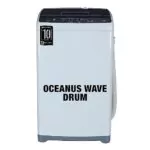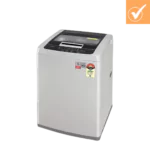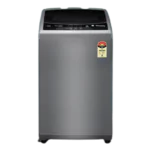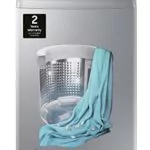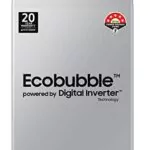How to Clean a Washing Machine – Tricks & Hacks

The automatic Washing Machine comes with several programs and washing modes at the push of a button. The machine does everything automatically, and you just need to pick your program and turn it on.
When compared to semi-automatic Washing Machines, the automatic Washing Machine has a higher price.
But the benefit is that they make the process of washing easier, as well as it has a built-in heating system, that controls warm washing cycles.
Another benefit of these automatic washing machines is: It delivers a more thorough cleaning than a regular Washing Machine. You may go through our guide on how to buy the perfect washing machine for your needs before buying.
- Best Tips and Tricks for Fully and Semi Automatic
- How to Clean the Front Load Washing Machine
- How to Clean a Top Load Washing Machine
- How to clean a Semi Automatic Washing Machine
- Automatic and Semi Automatic Washing Machine
- Difference between Automatic and Semi Automatic Washing Machine
- FAQ's about Washing Machines
1 Best Tips and Tricks for Fully and Semi Automatic
- Clean your machine routinely, giving specific consideration to the detergent cabinet and the entryway seals, as this is the place microbes like to develop.
- Run a cleaning cycle once per month on a hot wash (60C or higher) with no garments or detergent in the machine. This will free the machine of any microscopic organisms. We would recommend using an exclusive Washing Machine cleaner to run a cleaning cycle every 3 to 6 months.
- If a cleaning cycle is not available in your best Washing Machine, you can also clean the machine using half a cup of bleach, by running the machine with hot water on extra rinse.
- Leave the entryway open between washes to permit the circulation of air and prevent fungal growth on the walls of the drum.
- Check the drain filter regularly. Use a brush and detergent to clean it out thoroughly.
2 How to Clean the Front Load Washing Machine
1. Run a wash cycle by adding 2 cups of vinegar
Ensure the drum of your Washing Machine is empty, then click on the clean cycle or tub clean setting of your Washing Machine.
In case your Washing Machine does not have a cleaning cycle, simply select the largest and hottest load settings.
Add vinegar (2 cups) to the detergent plate, to get rid of smell-causing dirt and mildew.
Let the Washing Machine run a complete rinse and wash cycle.
2. Run a hot water wash cycle including 2 cups of bleaching powder
Fill hot water in the Washing Machine a second time on the clean cycle setting (or the largest, hottest setting).
Then add 2 cups of bleaching powder to the detergent tray, to eliminate the stains and germs that might be present in the washing drum. Once more, let the Washing Machine run a complete flush and wash cycle.
3. Run the additional rinse cycle
After all the dirt is removed, run one more cycle for complete cleaning. This will rinse thoroughly the remaining dirt.
4. Clean the detergent tray
Remove the fabric softener dispenser, bleaching powder dispenser, and any other parts that are removable from the detergent tray of your Washing Machine.
In a bucket with hot/warm water add some dish soap. Let the detergent tray pieces soak for some time.
After letting the pieces soak for some time, clean the detergent tray pieces completely with a sponge or a cleaning rag. After that allow the parts to dry and put them as they were in the detergent tray.
5. Clean seal of the door and machine exterior
Pull the rubber seal back around the Washing Machine door to check for mildews, deposits, and dirt.
In order to clean it, mix 1 cup liquid chlorine bleach with 1-gallon of warm water filled in a bucket. Wet a microfiber cloth with this solution made and use to clean the seal.
After that use a dry cloth to remove the remaining moisture inside the seal.
Finally, to clean the exterior body of the Washing Machine, use a wet cloth or good quality all-purpose cleaner.

3 How to Clean a Top Load Washing Machine
If you are aware with the differences between a front load and a top load washing machine, consider these few ways to clear a washing machine :
1. Soak in Bleach & First Wash
Empty 1 quart of bleach directly into the Washing Machine and run the clean cycle (or a cycle with the largest and hottest load settings).
Fill your Washing Machine with water with the lid open, and soak it for an hour to eliminate mildew and mold. After 1 hour, close the lid and let it finish the cycle.
If you do not prefer using bleach, you can use hydrogen peroxide instead.
2. Vinegar Soak
Start another clean cycle (or a cycle with the largest and hottest load settings).
After the machine is filled with warm water add 1-quart white vinegar (and 10 to 15 drops of essential oil if desired)
Open the lid and soak it for a minimum of 1 hour.
While the Washing Machine gets its soak on, clean the rest of the parts of your machine with a microfiber cloth, a toothbrush, and the vinegar solution.
After an hour close the lid and let the remainder of the clean cycle finish.
Once the clean cycle is complete, use some of the vinegar solutions to wipe the sides and bottom of the tub to remove any last residue.
3. Clean the detergent tray
Follow the same steps to cleanse the detergent tray as given in the front-loaded Washing Machine.
4. Clean the exterior body of the Washing Machine
Make a solution of an equal volume of vinegar and warm water. Using one microfiber sponge or cloth, wipe the exterior surfaces thoroughly.
You can also use an all-purpose cleaner to clean the exterior body of your Washing Machine to give it a great shine.
4 How to clean a Semi Automatic Washing Machine
The following are the two ways to clean a semi-automatic washing machine:
1. How to clean the washer
Set the washing machine on the highest load and fill it with lukewarm water.
Add 3-4 cups white vinegar and let the machine spin for one minute to dissolve the vinegar.
Then add half a cup of baking soda and run the machine to mix the baking soda with the vinegar in the water.
Stop the washing machine and let it rest for about 1 hour.
Meanwhile, you can clean the upper section of the washtub and the knobs with a moist soft fabric dipped in a mixture of warm water, baking soda, and vinegar.
Finish the wash cycle after 1 hour of soaking is done.
Use a moist microfiber cloth to clean any residue left in the washtub.
2. How to clean the dryer
Remove the lint trap and wash it using a soft brush & dish detergent.
Remove the outlet vent of the dryer and its connecting pipe and clean it.
5 Automatic and Semi Automatic Washing Machine
A. Front Load Washing Machine
Laundry in a front-load Washing Machine is entered through the front of the machine. You have to bend over to take the laundry in and out of the machine. However, one of the Best IFB Front Loader Washing Machines is the most energy-efficient and water-efficient washing in the market, using fewer resources as compared to the others.
Laundry in a front-load Washing Machine is washed using a tumbling motion similar to the movement used while washing clothes by hand. This applies less friction on the fabrics hence minimizing wear and tear. Front-load Washing Machines come with load sensors, counterweights, and padding to muffle the noise of the engine.
B. Top Load Washing Machine
As the name suggests, adding and removing laundry from a top-load Washing Machine is done from the top entryway of the machine. This Washing Machine is useful for the ones who want a machine where they don’t have to bend to stack the wearables in the machine. Automatic top-load Washing machines ordinarily occupy less space, so they’re worthy for individuals looking to fit them in smaller places.
C. Semi-Automatic Washing Machine
A semi-automatic Washing Machine is a double tub Washing Machine. The washer tub washes and rinses your laundry and the dryer tub spin-dries your clothes for you. Due to the two tubs, laundry needs to be manually moved from the washer tub to the dryer tub for drying. The control panel on the machine is manual as well. However, semi-automatic Washing Machines are gentler on fabrics, use less water, and have more load capacity than other Washing Machines.
6 Difference between Automatic and Semi Automatic Washing Machine
| Automatic Washing Machine | Semi Automatic Washing Machine |
|---|---|
| The cleaning process takes place with the least human effort. | Some manual input is needed when doing laundry because it has several tasks before the laundry is done |
| It consists of only one tub for both cleaning and drying. | It has two tubs, one for cleaning your laundry, and the other one for drying it. |
| There are 2 types of automatic washing machines, a top-loading, and a front-loading machine. | Semi-automatic machines are available in various designs, but the concept of design and working remains the same with the two tubs process. |
| Automatic washing machines consume more water as compared to a semi-automatic washing machine. | You must manually fill the water in a semi-automatic machine, which gives you control to decide the amount of water to fill in each load. |
| Automatic washing machines provide you with one option of the top-load machines also. | Semi-automatic machines are bulky; hence, bulk up a lot of space. |
| An automatic washing machine is more expensive as compared to a semi-automatic washing machine. | A semi-automatic machine is less costly than an automatic washing machine. |
| The controls in an automatic washing machine are pre-programmed and can be programmed as well. | The controls in a semi-automatic washing machine are manual. |
| Top-load washing machines | Front-load washing machines |
|---|---|
| More convenient since you don’t have to bend over to load and unload clothes | Inconvenient, since you must bend over to load and unload your laundry |
| A top-loader washing machine can never match the cleaning performance of a front-loader washing machine | They are best at removing soils and stains from clothes |
| A basic level top-loader with an agitator uses 40% more water than a standard front-loader | Front-loaders outperform the top-loaders in saving water |
| A top loader with an agitator washes the clothes faster since the clothes are constantly bathed in a big pool of water | In general, a standard front-loader takes around 50-60 minutes to complete a cycle whereas a top-loader does the same job within half an hour or so. |
| A top-loader washing machine cleans using an agitator. These clutches, stretches, and twists the fabrics, and is harsh on the fabrics. | A front loader uses tumbling motions to move the clothes up and down, and hence the fabric gets less wear and tear. |
| A top loader cannot compete with the energy efficiency of most front loaders | A front loader is more efficient due to its faster spin speed |
| The door of a top loader can be in between wash cycle and clothes can be added during a wash cycle | The door of a front loader cannot be opened in the middle of a cycle, as it is used to prevent any water leakage |
| Trapping of moisture and causing molds and mildews is relatively less in top loaders | The watertight door in a front-loader traps moistures in between the gaps which harbor molds and mildew leaving a smell of must in the clothes after the wash |
| Top-loaders use more detergent as compared to front-loaders | Since front-loaders use less water they also require less amount of detergent |
| A top- loader makes sound and vibrates with rattling noises | All front-loaders are generally quieter than top-loaders |
| Top- loaders are relatively cheaper than front-load washing machines | Front-loaders cost more than a top-loader because of their efficiency in cleaning, advanced features, and less power consumption |
FAQ's about Washing Machines
How to use Automatic washing machine ?
If you’re a person who has newly acquired a washing machine, here are certain steps to make your journey a smooth ride.
1.Connect the machine to the power socket.
2.Connect the inlet pipe and outlet pipe. The outlet pipe should be placed appropriately so as to dispose off the waste water.
3.Add the detergent powder.
4.Power on the machine.
5.Make sure you have selected the required mode: washing mode, rinsing mode, spinning or dryer.
6.Set the water level.
7.And start!
How to use Semi Automatic washing machine ?
Using a semi automatic machine is the simplest thing ever. A person has to be present to do a few tasks as the semi automatic machine requires manual human intervention. Here are the steps:
1.Add clothes to the tub.
2.Add water and detergent to the washer – just follow the directions on the label.
3.Select the length of the wash.
4.Once the wash is finished, drain the water. Add more water for the rinse cycle.
5.Drain the water.
6.Either transfer the clothes to the spinner tub (twin-tub models), or select the spinner mode (single tub models)
7.Remove the clothes and hang them on the line to dry.
How to use Samsung washing machine ?
Samsung offers a range of energy-efficient washing machines for the worldwide market. As per Samsung, the washing machines with front load offer excellent durability, ease of use, and innovative technology. Here’s how to operate a washing machine by Samsung in quick easy steps:
1. Sort the laundry by color / fabric type. Make sure to empty the pockets and pull the zippers up. Add the laundry to the machine. Do not overfill.
2. Close the door, press the power button
3. Open the detergent compartment and add the detergent as instructed on the package. Add bleach or fabric softener if need be.
4. Turn the cycle selector knob to the correct setting as required by your laundry load. You can manually tap the buttons and change settings if required on the control panel. These buttons control the temperature, rinse, spin and length of each cycle.
5. Press start to start the wash. A light turns on to show that the machine is in use. Once the cycle is complete, you hear a buzzer sound and the light turns off to let you know that the clothes are done with the washing!
How to use Whirlpool washing machine ?
These easy steps to take you through a whirlwind of laundry cleaning in your whirlpool washing machine:
1. To insert your laundry, lift the lid of your Whirlpool washing machine, if you have a top loading machine. For a front load, open the door to insert the laundry.
2. Add the detergent to the machine. If you use bleach or liquid fabric softener, you can add that as well. A few Whirlpool washing machines have marked dispenser areas to pour the liquids. For devices with no markings, simply add other things along with detergent in the laundry. It’s safe to remember that undiluted bleach can damage fabric it touches directly.
3. Close the door or lid of the washing machine. Turn your “Load Size” or “Water Level” knob to the setting that matches the size of your load.
4. Make use of the “Temperature” knob to select the water temperature in the washing machine.
5. Push in and turn the cycle knob till it points to your preferred wash cycle, for example “Delicates” or “Permanent Press.”
6. Once you’ve chosen your desired wash cycle, pull the cycle knob to start it. You may simply press the knob back in to stop it at any point during the cycle.
How to use LG washing machine ?
The LG washing machines are easy to use. Separate the clothes based on their colors or fabrics, whichever you prefer. For washing new clothes, there’s a separate line of instruction in the user manual. Make sure you follow them correctly.
1. Now open the detergent dispenser drawer and add detergent + fabric softener 2.
Once that’s done, press the cycle button and modify the wash cycle based on your needs to avoid any damage or color bleed.
3.Specific facilities such as the Turbowash (quick soak), LGSteam (removes dirt, odor and wrinkles) and the Allergiene cycle (removes household allergens) are available to optimize your wash
4.Click start to start!
How to operate IFB washing machine ?
Operating the IFB:
1. Place garments loosely inside the drum after opening the porthole door. It’s always better to load clothes one by one, a mix preferably of small and large clothes.
2. Remove loose hooks, rings, and pins from drapes, and turn heavy things like a pair of trousers or knitted clothes inside out. Or tie a knot with the cloths themselves to secure them.
3. Close the door behind you. A click will be heard. Ensure that no cloth is wedged between the door and the frame’s rubber gasket.
4. To load large items such as bed coverings and drapes, open them out and hold them from the middle.
5. To get the best wash results, make sure the load volume allows the clothes to tumble freely in the drum.
6. Make sure the drum isn’t overloaded. This will have an impact on the wash quality. In the long run, it could harm the machine and the garments.
7. Underloading the machine can result in excessive vibration, noise, and damage.
Using the proper amount of washing machine detergent will yield the finest results.
1. The following are the approximate quantities to be used: 5 kgs at full load Detergents should be used according to the manufacturer’s instructions on the package. Half-load or less than 2.5 kg Reduce the amount of detergent you use by 20 to 25%.
2. Preferably use a liquid detergent rather than powder.
3. If your locality runs on hard water or if you have more than usual stained clothes, add more detergent.
4. Using an insufficient amount of detergent will lead to improper wash and gray-brown stained clothes.
5. Excess detergent use will result in
6. Higher environmental pollution
7. Generation of too much foam
8. Scale builds up
PROGRAMS RUN
Grade:
During the program’s execution, the knob rotates in a clockwise manner exclusively.
Through the porthole glass, you can see the washing, rinsing, and spinning going on.
The location of the knob in relation to its start point indicates how far the program has progressed at any given time.
The beginning point is right past the knob’s thick line.
How to use fully automatic washing machine front loading without tap water ?
To use a fully automatic machine without tap water is not possible however if you don’t have a tap near your washing area, you might want to install a water tank and pump water to the machine. Once your washing machine water valve opens, the water will flow from the vessel into the machine causing a pressure drop. This drop operates the pressure switch, switching on the pump motor. If drinking water is scarce you may need to provide a different water supply for the washing machine, using water that is not good enough to drink.
How to use tub clean in IFB washing machine ?
Certain metal compounds with each wash cycle, minerals like magnesium and calcium deposit limescale inside your washing machine’s parts. These substances have an effect on the heating elements and other components. Accessories and machine parts, reducing the machine’s efficiency and longevity.
IFB essentials Descale aka tub clean acts instantly on stubborn compounds and collects the sediments and flushes them out with the wash water. It restores the original crystal quality of limescale-affected machine parts and leaves your machine drum gleaming clean.
Descale minimizes the machine’s maintenance costs, as well as the amount of power and detergent used. Limescale is carefully removed using a combination of mild acids and corrosion inhibitors without causing damage to other sections of the machine.
It can also be used on your electric kettle, coffee maker, showerheads, or steam irons.
To use it:
-Make sure the washing machine is empty before you start.
-Pour the contents of the descale into the detergent compartment.
-Select the 60-degree program and start the appliance.
-Once the descale is used up, run the machine once more without any added items to remove the descale residues from the drum/tub.
How to use Comfort in washing machine ?
Comfort or as they call it, fabric softener is used in washing to make the clothes soft and good as new. There are different techniques to use the fabric softener with different variants of the washing machine. Here goes:
1.Using Fabric Softener in Fully Automatic Washing Machines
In most automatic washing machines, fabric softener must be added to where you add detergent – the location of the fabric softener section may vary in different machines, so be sure you read the instruction booklet for your washing machine.
The majority of fabric softeners are liquid and come in either a measuring cup or a sachet.
Fill the glass according to the directions on the bottle’s label: the quantity of fabric conditioner you use should be adjusted according to the length of the load.
Drop the fabric softener from the glass into the appropriate drawer, and the machine will do the rest during the final rinse.
2. Using Fabric Softener in Semi-Automatic Washing Machines/ how to use comfort fabric conditioner in the washing machine
If you’re using a semi-automatic washer, all you have to do now is add the appropriate amount of fabric conditioner to the final rinse.
When it comes to fabric softener, there are a few things to keep in mind.
When using fabric softener, always follow the guidelines on the label; this will ensure that you obtain the greatest results.
It’s critical to remember that the fabric softener should not come into direct contact with clothing, as it may stain or mark them.
How to use Godrej fully automatic washing machine ?
A user manual comes with the Godrej washing machine that helps you with the daily washing. It shows you how to install the washing machine, the purpose of each button on the control panel, the operation of each button ( be it temperature, water level, soak, wash, rinse, spin, etc.), operation of the important buttons (DAC, start/pause, save, child lock, memory backup, etc.), the types of cycle (rinse, soak-wash-rinse, wash-rinse, rinse-spin and spin only), the process, program cycles (fuzzy, normal, gentle, saree, jeans, strong, wool and favourite), the type of clothing that is best for a specific program cycle, selecting water level and load size and operation for every program cycle.
Not just that, the manual is highly efficient and will tell you how to look after the washing machine for longevity and when to not intervene and call a service person.
How to use dish washing machine ?
Although washing machines and dishwashers are completely different items when it comes to electronics, their end goal remains the same. Cleaning. A wide variety of Indians do not use a dishwasher but they are available to buy at your convenience, online as well as offline. They come along with a user manual that helps one with relevant operating information.
How to use Haier washing machine ?
The haier washing machine only requires connecting the water inlet to a tap, adding the clothes and running the machine.
1. Water will keep pouring until the clothes are submerged in the water.
2. Switch on the appliance and select a program.
3. Add individual selections from the control panel and start the wash programs.
4. Once the machine is turned on, it takes 41 minutes to complete the default process.
5. At programs cycle end END is displayed.
6. The appliance switches off automatically.
7. Remove laundry as soon as possible to go easy on it and to prevent more wrinkling.
8. Turn off the water supply.
9. Unplug the power cord.
10. Open the door to prevent formation of moisture and odors. Let it open while not used.
Community Q&A
About This Article
Hardik Jethva is an experienced author of the BestCheck family. Working from scratch, he has developed an amazing interest in testing and writing about different products in a transparent manner. His writing skills got more audience for BestCheck. Apart from his professional life, Hardik has his eyes on travelling, meditation, eating healthy food, socializing with people, and car rides.
This article has been viewed 2255 times.

